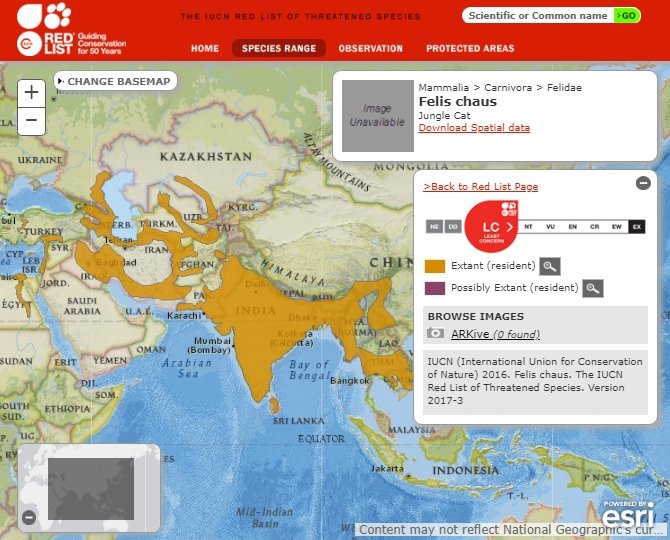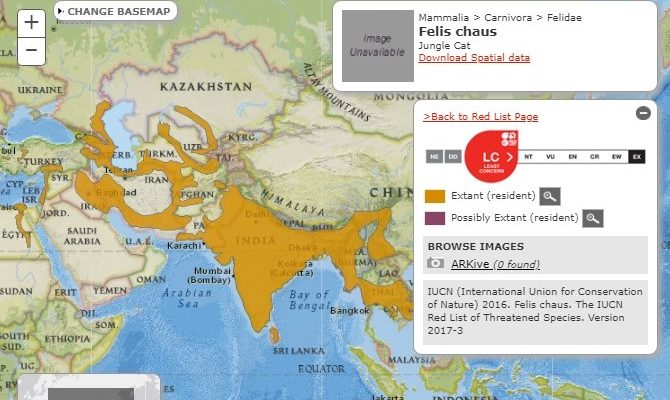
Jungle cats (Felis chaus) are nimble, adaptable animals found primarily in parts of Asia and the Middle East. If you’re wondering where exactly they live and what their habitats look like, you’re in the right place! In this article, we’ll explore the habitat and distribution of jungle cats, shedding light on their preferences and how they survive in the wild.
Overview of Jungle Cat Habitats
Jungle cats are often found in diverse habitats. They tend to prefer areas that provide both cover and proximity to water, which is crucial for their survival. You might find them in places like:
- Wetlands: Marshes and swamps are ideal for jungle cats.
- Grasslands: Tall grasses offer excellent camouflage for stalking prey.
- Forested areas: They thrive in dense brush, allowing them to hide from predators.
These habitats not only provide shelter but also a variety of prey. From rodents to birds, jungle cats are versatile hunters. Interestingly, their adaptability allows them to live in areas that humans have altered, such as agricultural fields. So, while they prefer natural environments, they can also make a home in modified landscapes.
Geographic Distribution of Jungle Cats
You might be curious about where jungle cats can be found around the globe. Their range is quite extensive, primarily covering:
- South Asia: Countries like India, Bangladesh, and Nepal are home to many jungle cats.
- Middle East: They can be spotted in regions like Iran and Iraq.
- Southeast Asia: Jungle cats stretch their territory into parts of Thailand and Myanmar.
This broad distribution means that jungle cats have adapted to various climates and environments. They typically prefer areas near water bodies, such as rivers and lakes, where they can find food and maintain a territory.
Habitat Preferences in Detail
Let’s dive deeper into what makes a great home for a jungle cat. Their ideal habitat balances several factors:
1. Water Availability: Jungle cats are often found near water sources. This is not only vital for their hydration but also because many of their prey, like fish and amphibians, thrive in these areas.
2. Cover and Shelter: Dense vegetation is crucial for jungle cats. It allows them to stalk prey without being easily spotted. A thick underbrush or tall grass can be a jungle cat’s best friend, providing both a hunting ground and a hiding spot.
3. Food Sources: Their diet is varied. Jungle cats primarily hunt small mammals, birds, and reptiles. They need a habitat rich in these food sources to thrive. If a habitat becomes too barren, they might relocate in search of better hunting.
With all these factors, jungle cats have evolved to be impressive survivors. Their versatility means they can adapt if one habitat becomes unsuitable.
Impact of Human Activity on Jungle Cat Habitats
Human expansion and development have a significant impact on jungle cat habitats. The increase in agriculture, urbanization, and pollution often leads to habitat loss. Here’s how that plays out:
– Habitat Fragmentation: When forests or wetlands are cleared for development, it can isolate jungle cat populations. This makes it harder for them to find mates and leads to decreased genetic diversity.
– Loss of Prey: Agriculture can reduce the natural prey available to jungle cats. If their food sources diminish, they might venture into more populated areas, leading to human-wildlife conflict.
– Pollution: Contaminated water sources can impact their health and the health of their prey. A polluted environment is hostile to their survival.
Conservation efforts are essential. Protecting their habitats not only helps jungle cats but also supports the entire ecosystem.
Conservation Status and Efforts
So, what’s being done to protect jungle cats? While these animals aren’t currently endangered, they do face threats due to habitat loss and other factors. Conservation efforts focus on:
- Habitat Protection: Establishing protected areas to ensure jungle cats have safe environments to thrive.
- Public Awareness: Educating communities about the importance of jungle cats in the ecosystem can foster coexistence.
- Research: Ongoing studies help understand their behavior and ecology, informing better conservation strategies.
Conservation organizations are working hard to raise awareness and develop policies that protect these remarkable creatures and their habitats.
Jungle cats are truly incredible animals, showcasing the beauty of nature’s adaptability. Their preferred habitats reveal a lot about their lifestyle and survival strategies. From wetlands to grasslands, they thrive in environments that offer cover and an abundance of prey. However, human activity poses challenges to their existence, making conservation efforts all the more crucial.
Understanding where jungle cats live helps us appreciate their role in the ecosystem and the need to protect their habitats. So next time you think of these fascinating creatures, remember the vibrant worlds they inhabit and the importance of keeping those worlds safe. Together, we can ensure that jungle cats continue to roam the wild for generations to come.

